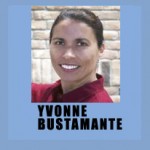Interview by Allen Cardoza
Douglas Bodin is an experienced educational counselor who helps young people who need therapeutic intervention. In his role as an expert advisor, he helps the family decide on the most effective course of treatment for the adolescent or young adult.
Speaking with Allen Cardoza on the Answers For The Family radio show, he described the dismal reality of finding a therapeutic treatment curriculum that actually worked as advertised.
Apparently, despite the large number of indoor or outdoor rehabilitation services in the United States, staffed by certified psychologists, dedicated teachers and experienced counselors, rehabilitation is often a revolving door, with a high rate of recidivism. Either the treatments have little to no effect or they only offer a temporary one.
The Revolving Door of Rehabilitation
When asked by Cardoza why the success rate was so low, Bodin said parents often tended do is seek immediate relief from the chaos within their household by enrolling their recalcitrant child in the first program they could find. They selected a program based on scant information about it. Perhaps, they found it in a print advertisement, or on the Internet, or they heard about it. Usually, most programs found this way, although well-intentioned, had a high failure rate, which some experts believe to be as much as 92%.
Reasons for the High Failure Rate
This traditional random and haphazard way of dealing with the domestic chaos, according to Bodin, was the wrong way to go about resolving it.
He identified three reasons for this pervasive failure rate:
- The rehabilitation program did not directly deal with the underlying disorder that created the behavioral issues. For instance, the young adult may not necessarily have been acting out but may have been trying to self-medicate to assuage learning, developmental, or psychological issues.
- The rehabilitation program did not have enough time to create an impact. Usually, the shorter the program, the less effective it tended to be. Some programs, only lasting a month, were simply too brief to create enduring changes.
- Even if the program itself was excellent and did produce positive attitudinal and behavioral changes, the parents would unconsciously undermine all progress made when the young adults returned home. For instance, the parents might continue with the same pattern of codependency that created the errant behavior or substance abuse in the first place.
In Search of A Search
After discerning the pattern that led to poor results, Cardoza questioned his guest about what did work.
Bodin outlined a simple plan that was much more likely to have good results.
- The parents needed to get expert advice on where to send their child rather than simply choosing a rehabilitation program based on advertising or hearsay.
- The parents needed to be involved in some way with the treatment process because it was a systemic family issue.
- The adolescent needed to accept the need for change, committing to follow the program rather than resisting it.
Final Thoughts
Based on his years of experience, Bodin found that the most effective programs were outdoor or “wilderness” rehabilitation programs, like, for instance, participating in a working farm. Additionally, the programs needed to be last long enough to create change, perhaps lasting a year or longer.
If you would like to learn more about the ideas proposed by Douglas Bodin, you can listen to the entire interview on Allen Cadoza’s blog.






